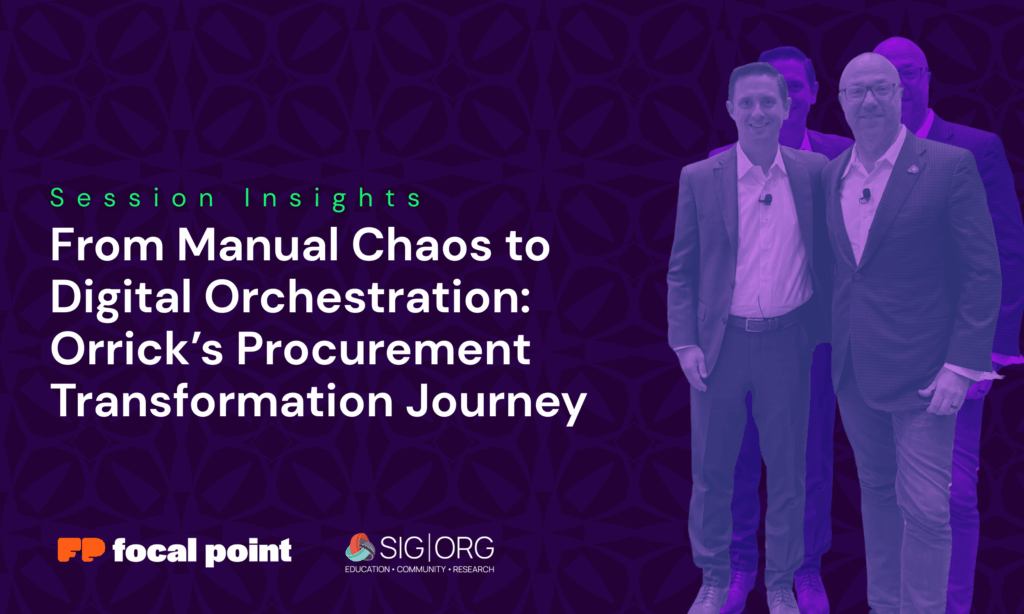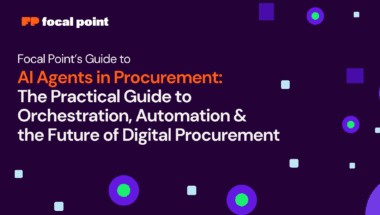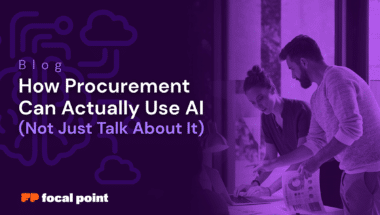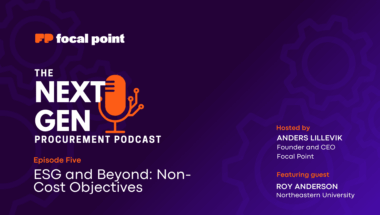At SIG Fall, Focal Point CEO Anders Lillevik and Orrick’s Head of Vendor Management and Procurement, Stephan Hutter, took the mainstage to share an inside look at Orrick’s procurement transformation journey. The conversation explored how a leading law firm digitized its workflows, overcame manual bottlenecks, and built a more strategic, future-ready procurement function.
The Challenge: Procurement Behind the Curve
While corporate procurement had been advancing for years, the right tools that allow procurement teams to achieve strategic objectives set for them have not always been in-reach. Orrick had a passionate, intelligent team with resources well-versed in their field, but processes were email-heavy, intake forms weren’t dynamic, and talented people were stuck doing repetitive, low-value administrative tasks.
As Stephan put it, “We had really smart, dedicated people, but if all they’re doing is clicking through forms, that’s not the best use of their expertise.”
Vision and Goal Definition
The project began with a clear vision (a crucial factor in any successful procurement platform implementation process). Orrick set out to design an ideal process, not constrained by tools or outdated methods. That process-first approach allowed the team to map exactly where they wanted to go.
This vision became the foundation of their business case: instead of piesemealing different tools together, Orrick sought a single solution that could handle diverse contract and procurement requests, integrate with existing systems, and scale as needs evolved.
Building the Business Case
Like many non-revenue functions, procurement had to justify investment. Stephan became a “salesperson” within the firm, highlighting three pillars of value creation:
- Freeing talent for higher-value work: shifting attorneys away from administrative tasks toward legal counsel and contract review.
- Consolidating tools and suppliers: avoiding patchwork tech stacks and improving efficiency.
- Accelerating throughput: reducing cycle times and improving visibility into project status.
The firm’s strong culture of innovation made leadership receptive, but the numbers and clear goals sealed the deal.
Implementation: From Stakeholders to User Experience
Orrick focused not only on procurement staff, but also on internal clients. The goal was a customer-like experience: intuitive, streamlined, and tailored to the request type.
For example, consultants weren’t asked irrelevant technology-stack questions, intake was adapted to fit the need. This balance between user experience and risk management created quick wins and helped drive adoption.
Without prompting, business users outside core stakeholders reached out to praise the system. As Stephan shared, “They emailed me to say, ‘This was super easy. This was great.’ That kind of feedback was a big feather in my cap with leadership.”
Early Results: Compliance and Efficiency Gains
Three months into implementation, Orrick was already seeing measurable results:
- 30% more volume year-over-year, largely due to higher compliance.
- Faster cycle times and clearer visibility. Stakeholders always know where their request is in the process.
- Greater cross-team interest: privacy and other departments asked for customized workflows once they saw what was possible.
In other words: passion inspires passion, and innovation inspires innovation.
Lessons Learned
Looking back, Stephan noted two areas for improvement:
- Bring stakeholders in earlier. Some teams didn’t realize the potential until they saw it in action.
- Anticipate change management. Even with strong training, adoption can be uneven. Extra hand-holding is often needed.
What’s Next: AI, Risk, and Strategic Value
The next frontier for Orrick is building risk-focused workflows, especially around AI adoption. As suppliers introduce AI features into existing tools, Orrick is creating intake and monitoring processes to ensure compliance with ethical obligations and client data standards.
Meanwhile, Focal Point is evolving from tactical orchestration into supplier management and category management, powered by the data foundation already in place. With AI agents on the horizon, the orchestration layer becomes not just a connector of processes, but a driver of strategic insight.
Final Takeaway
Procurement transformation is about clarity of vision, freeing talent for meaningful work, and creating seamless user experiences. Orrick’s journey shows how even industries known for tradition (like law) can modernize and innovate when innovation and discipline come together.



